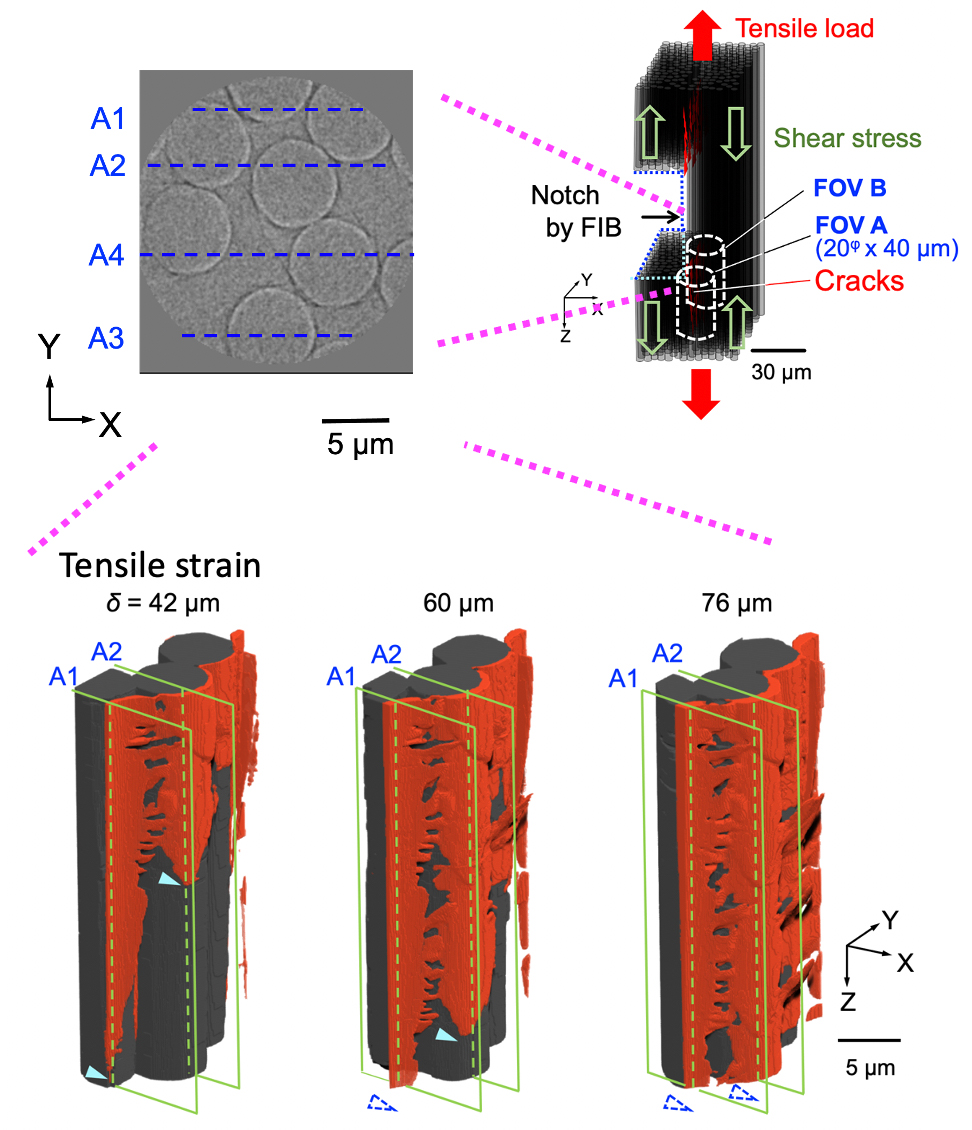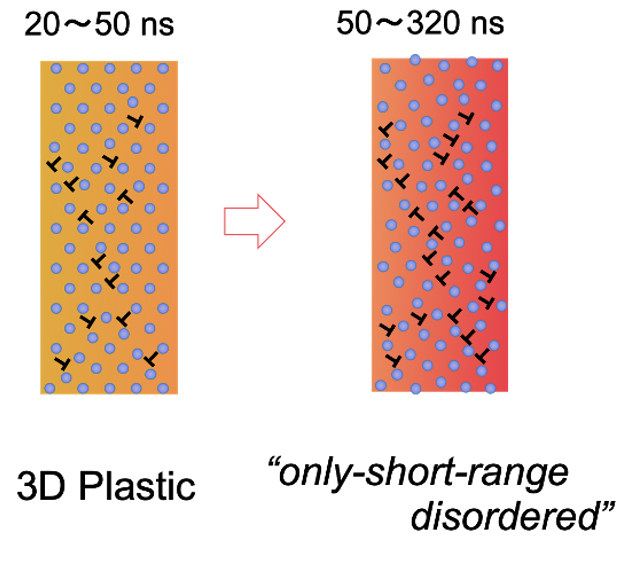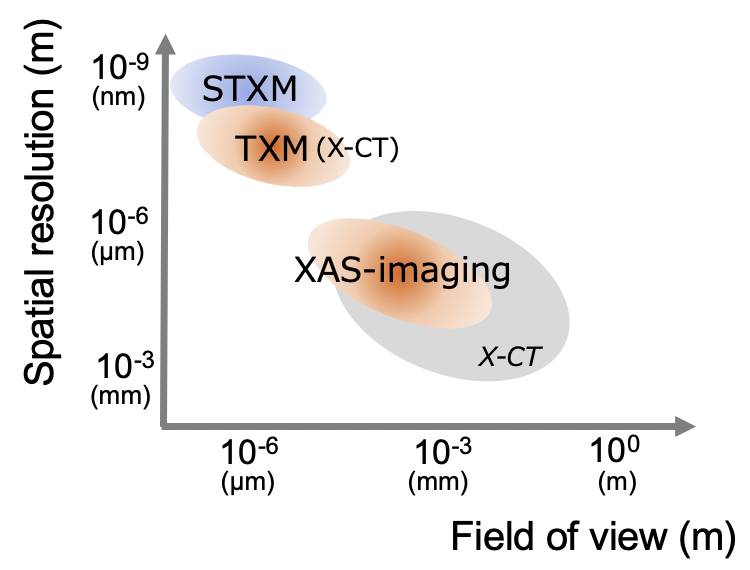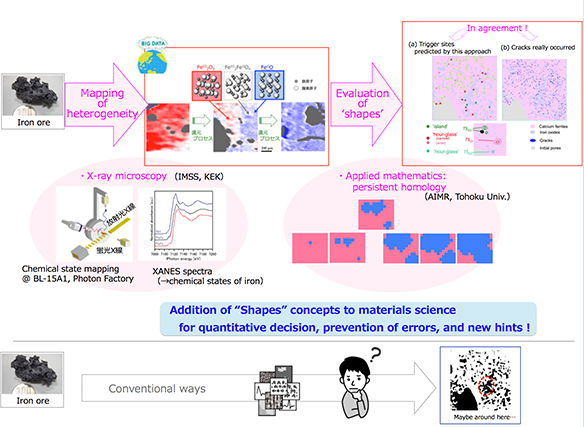Typical results
-

How do metals (CFRP) fracture at nano-scale ?
April 19, 2022
Nanoscale fracture mechanism in CFRPs is still debated owing to the considerable difficulty in determining the three-dimensional mechanism of fracture using conventional techniques such as optical and/or electron mi- croscopy relying on side-surface- and fracture-surface-based observation. In this study, microscopic damages such as fiber/matrix debonding and microcracks under mixed-mode (mode I + II) loading are characterized in situ using nondestructive nanoscopic synchrotron radiation X-ray computed tomography (nanoscopic SR X-CT)....
-

How do metals fracture at nano-scale ?
October 27, 2021
In this study, we in situ examined how the atomic structure of copper changes during the fracture process on the nanosecond scale using X-ray absorption spectroscopy and X-ray diffraction. The fracture was triggered by a shock wave induced by an optical laser and was examined with a single 100-ps synchrotron X-ray pulse with a delay time of 0–200 ns. This novel experimental approach provides insights into how the short- and long-range order of an atomic structure change on the nanosecond scale. The results showed that there was an irreversible change in the deformation state on the nanosecond scale.
-

How can we use X-ray microscopy for materials science ?
April 1, 2019
Macroscopic phenomena, such as fracture, corrosion, and degradation of materials, are associated with various reactions which progress heterogeneously. Thus, material properties are generally determined not by their averaged characteristics but by specific features in heterogeneity (or ‘trigger sites’) of phases, chemical states, etc., where the key reactions that dictate macroscopic properties initiate and propagate. Here, we utilize X-ray microscopy and applied mathematics to find "trigger sites" in various materials.
-

How can we make the best use of image data showing the heterogeneity during reactions ?
April 10, 2018
Macroscopic phenomena, such as fracture, corrosion, and degradation of materials, are associated with various reactions which progress heterogeneously. Thus, material properties are generally determined not by their averaged characteristics but by specific features in heterogeneity (or ‘trigger sites’) of phases, chemical states, etc., where the key reactions that dictate macroscopic properties initiate and propagate.Here, we introduce a new persistent homology approach for identifying trigger sites and apply it to the heterogeneous reduction of iron ore sinters...
-

Chemical state mapping of heterogeneous reduction of iron ore sinter
June 21, 2017
Degradation of EBC progresses heterogeneously during heat cycles. Observation of the heterogeneous reaction, especially change of chemical states is of great importance. We developed the chemical state mapping using XANES, and applied it to a model case: heterogeneous reduction of iron oxides.